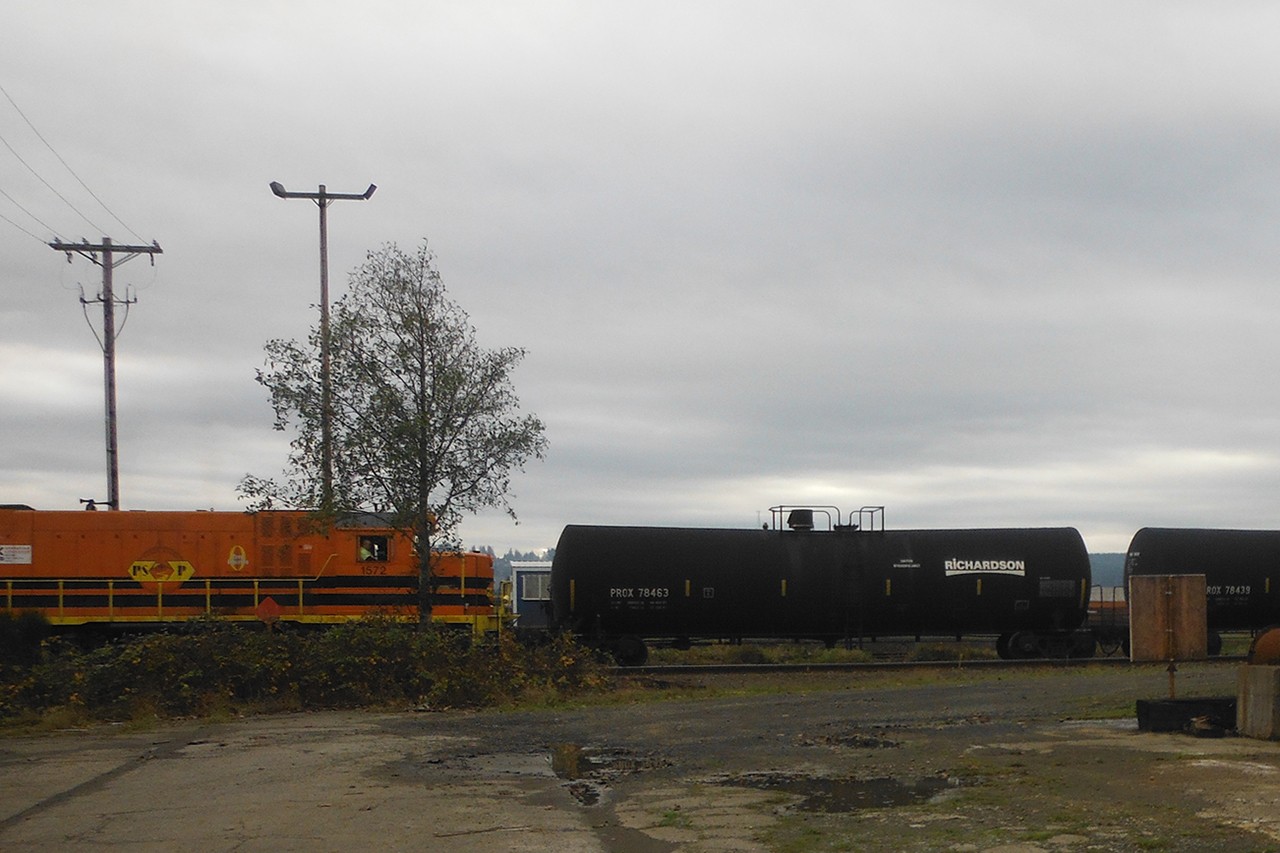A lot of the public outcry against a Port of Grays Harbor crude oil transfer facility centers around the potential for a devastating spill or fire, a catastrophe resulting in the loss of life and property. But what about potential impacts of just the daily operation of Contanda’s expansion plans, for instance, the impact of increased rail traffic on your daily commute? The Department of Ecology detailed just how many more trains there could be and what that means to for drivers waiting at the area’s busy rail crossings in its final EIS for the project.
Right now the Contanda terminal sees on average about four train cars a day, “But not every single day,” said terminal manager Steven Williams. “Depending on the day we can get up to 12 cars.” If the project goes forward, that number can grow up to five times. “We could see up to 60 cars a day,” he said.
At the time of the study the current rail traffic on the Puget Sound & Pacific rail line is about three train trips a day; the expansion would bump that number to just over four trips. The increased number of trips will make for additional wait times at the crossings. Ecology says the busiest crossing at Olympic Gateway Plaza experiences blockages for 49 to 70 minutes each day. That would climb to 96 to 112 minutes per day. As for impacts on traffic, the study separates the amount of time that crossing area is blocked for vehicles; currently, 37 to 44 minutes, reaching 45 to 52 minutes if Contanda’s project is green-lit. Vehicles would be blocked more than four additional times a week as well. Generally, the entire stretch from Gateway to the Port would see increased crossing blockages with vehicle delays stretching at times more than 15 percent longer compared to current levels.
The study assumed each train would be 120 cars long. Williams says trains are typically 80 to 120 cars long. Out of that total 60 could be headed to Contanda’s facility, which currently has space to unload eight cars and store another 18. The rest would wait their turn at the Poynor Railyard just west of the expansion.
Ecology offers some things that can be done to lessen the impact on local drivers, including educating the public on increased traffic, improving signage and working with local police and fire to decrease delays to emergency services. Williams says they already do and will continue to work closely with local emergency responders to ensure services are not interrupted.
The EIS sums it up like this: “Implementation of the mitigating measures, plans, and infrastructure improvements described could reduce impacts on vehicle traffic, but would not eliminate them. The proposed project could have significant and unavoidable adverse impacts on vehicle delays from trains blocking crossings in the Olympic Gateway Plaza and Port of Grays Harbor areas of Aberdeen.”



